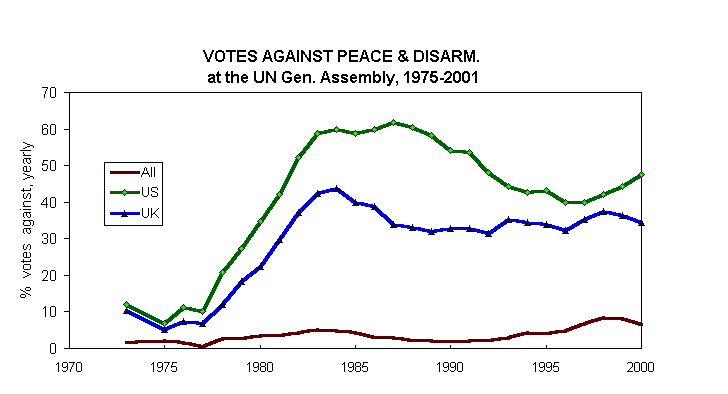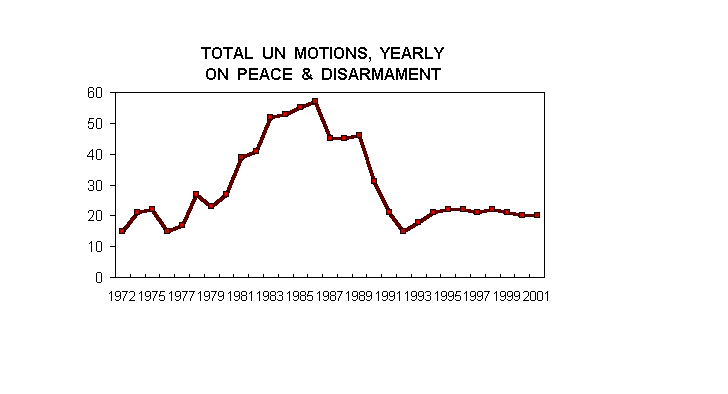Voting Against Peace & Disarmament
Each year, the United Nations publishes a 'Disarmament Yearbook,' and
this outlines all the motions passed by the UN General Assembly that endeavoured to
promote peace, international harmony, and disarmament. It also adds up the total votes
from nations which were 'for', 'against,' or 'abstained', on each of these motions. On
average, only two or three percent of all the votes cast went against these motions. There
are certain nations, however, which have made more of a habit of voting 'against,' in
these cases.
The scores here shown start from the early '70s. For these early voting-patterns I used
the SIPRI yearbook (Stockholm International Peace Research Institute), which gave more or
less the same list every year, as the UN Yearbook, of all the motions on the general area
of peace, international well-being and disarmament.

Figure 1 shows, how America and Britain have lead the world, in voting against peace and
disarmament motions at the UN's General Assembly. It shows dramatically how this trend
began in the 1980s - as the new Cold War axis of Thatcher and Reagan became established.

Figure 2 shows how the total number of these votes hovers around 30-40 per annum year
nowadays, but rose much higher during the 1980s. This suggests that the world was making a
great effort in that decade to advance internationalism, peace and disarmament, which was
however matched by a huge peak in votes against these topics, by the US/UK cold warriors.

Figure 3 identifies the top 'bad four' nations who have voted most consistently against
these motions, over the two decades 1980-2000: The US, UK, France and Israel. America has
voted against them more than half the time, Britain about one-third of the time.
Note: Figure 1 is a three-point moving average, i.e. it sums total votes 'against' over
three years to compute the percentages.
Nicholas Kollerstrom, PhD,nk@astro3.demon.co.uk
6.3.03


